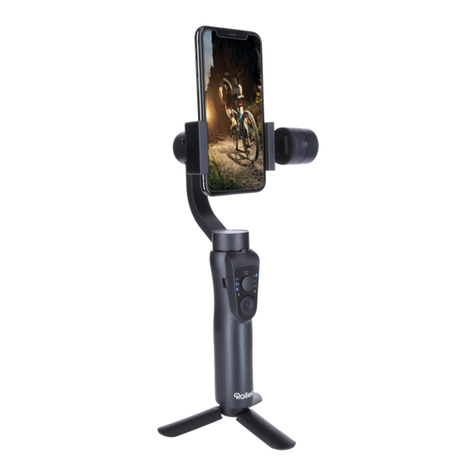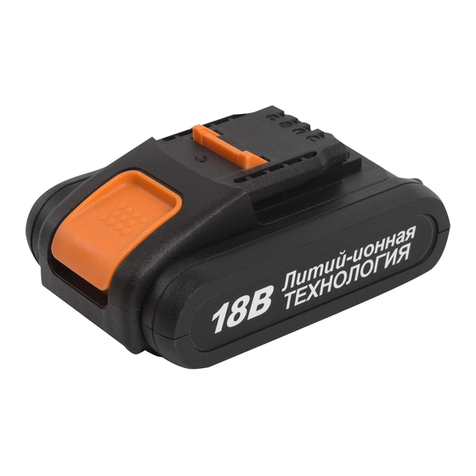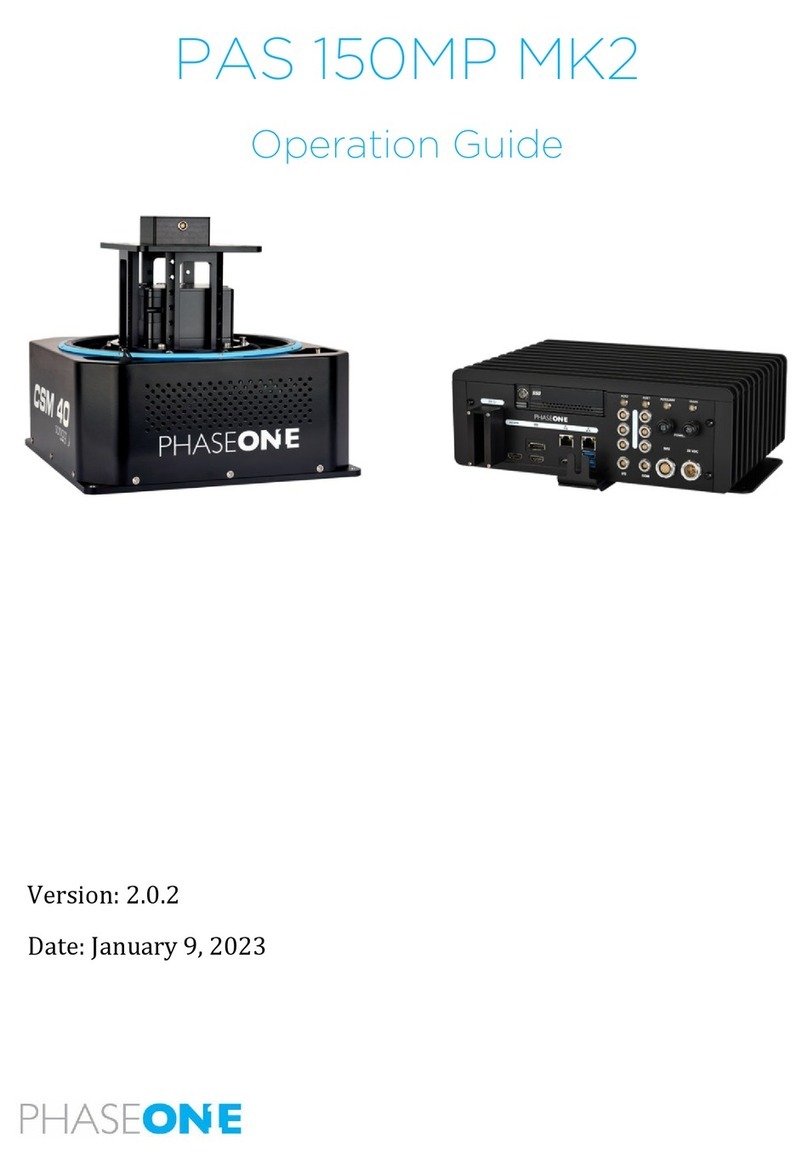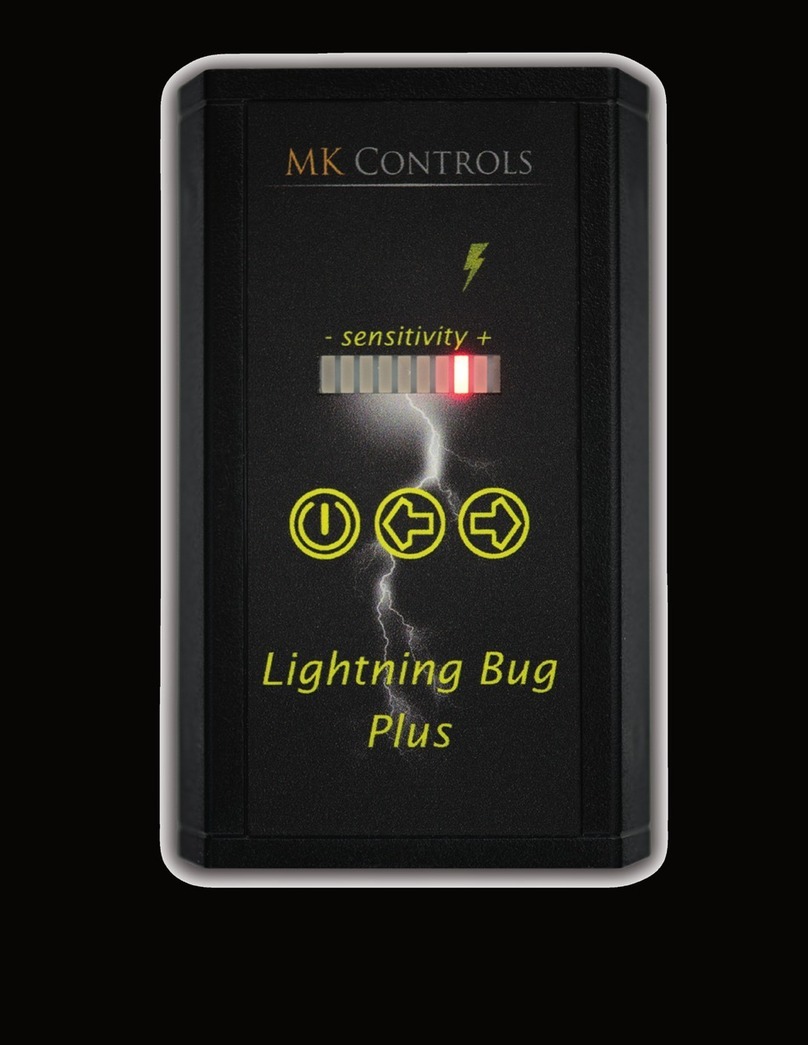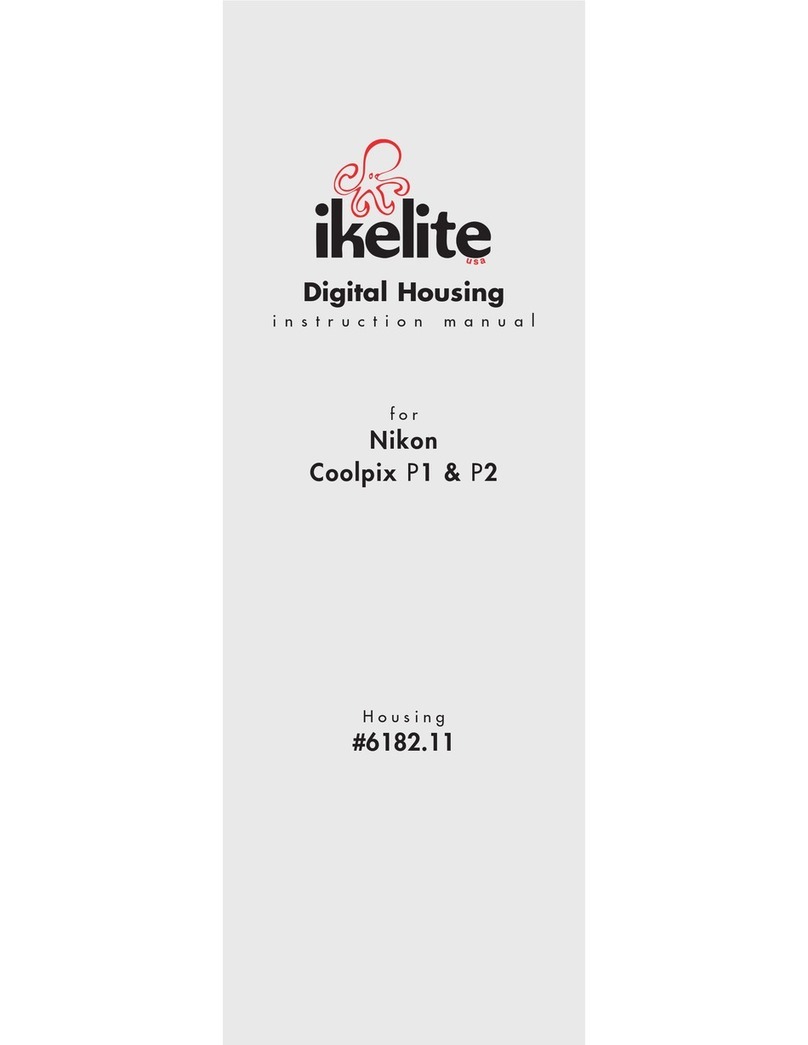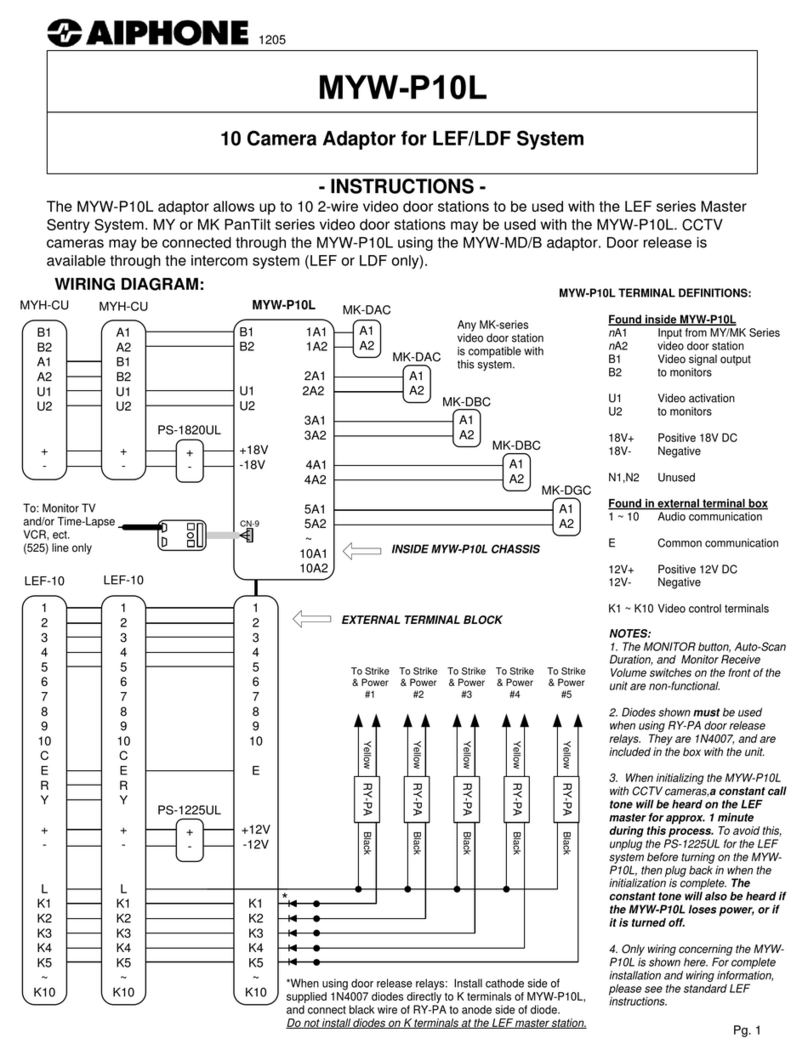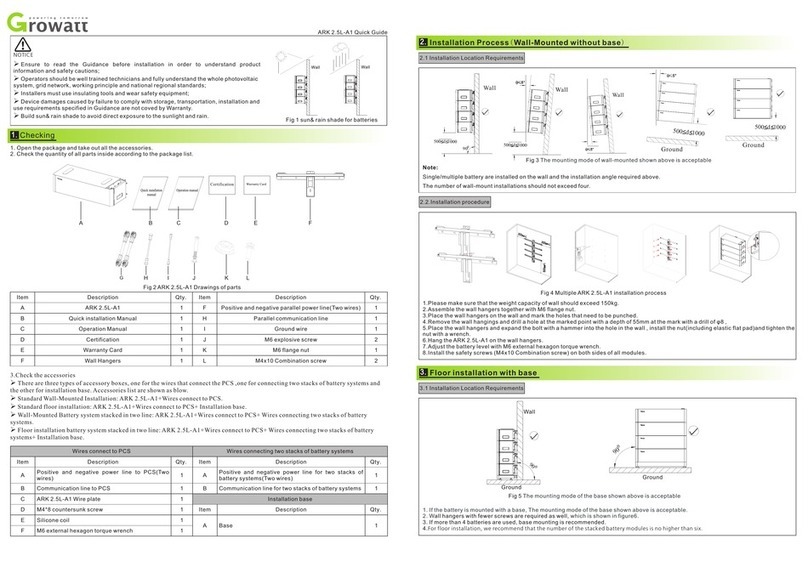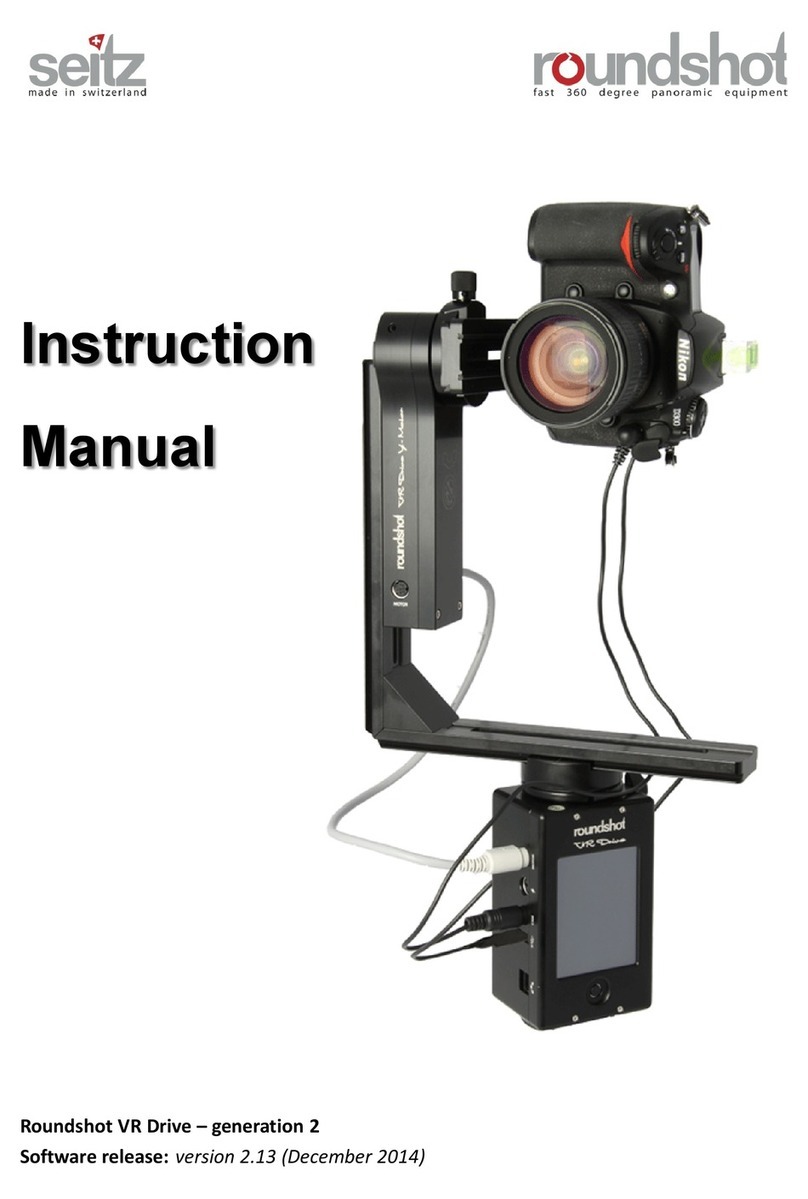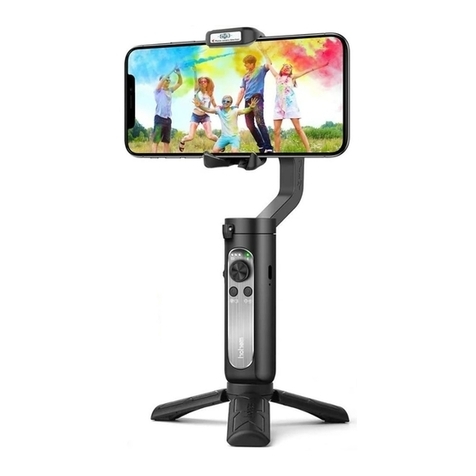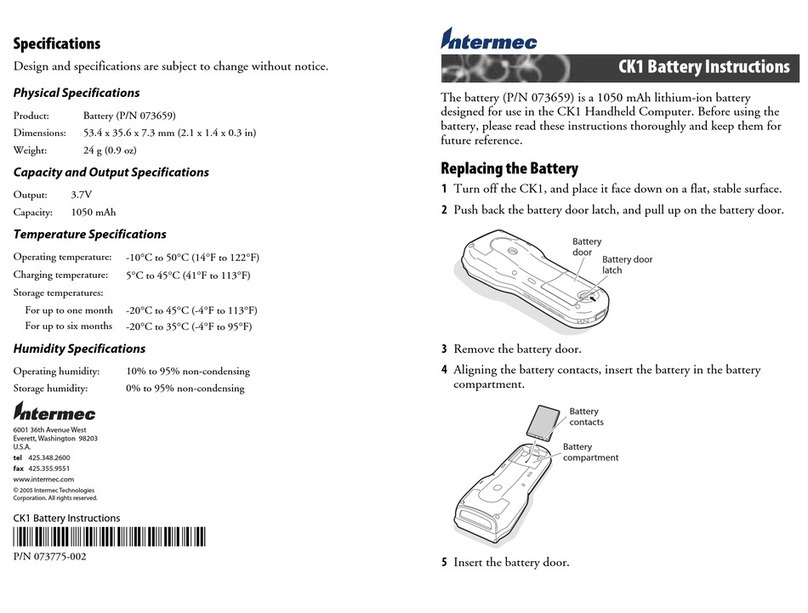Invacare Power Wheel Chair P7E Manual

P7E
Owner's Operator And Maintenance Manual
DEALER: THIS MANUAL MUST BE GIVEN TO THE USER
OF THE WHEELCHAIR.
USER: BEFORE USING THIS WHEELCHAIR, READ THIS
MANUAL AND SAVE FOR FUTURE REFERENCE.

2
WARNING
DO NOT OPERATE THIS EQUIPMENT WITHOUT FIRST READING AND
UNDERSTANDING THIS MANUAL. IF YOU ARE UNABLE TO
UNDERSTAND THE WARNINGS, CAUTIONS, AND INSTRUCTIONS,
CONTACT A HEALTHCARE PROFESSIONAL, DEALER OR TECHNICAL
PERSONNEL IF APPLICABLE BEFORE ATTEMPTING TO USE THIS
EQUIPMENT - OTHERWISE INJURY OR DAMAGE MAY RESULT.
THE INITIAL SET UP OF THIS WHEELCHAIR MUST BE PERFORMED BY A
QUALIFIED TECHNICIAN.
PROCEDURES OTHER THAN THOSE DESCRIBED IN THIS MANUAL
MUST BE PERFORMED BY A QUALIFIED TECHNICIAN.
W
A
R
N
I
N
G
SPECIAL NOTES
WARNING/CAUTION notices as used in this manual apply to hazards or unsafe practices which could
result in personal injury or property damage.
NOTICE
THE INFORMATION CONTAINED IN THIS DOCUMENT IS SUBJECT TO CHANGE WITHOUT NOTICE.
WHEELCHAIR USER
As a manufacturer of wheelchairs, Invacare endeavors to supply a wide variety of wheelchairs to
meet many needs of the user. However, final selection of the type of wheelchair to be used by an
individual rests solely with the user and his/her healthcare professional capable of making such a
selection.
WHEELCHAIR TIE-DOWN RESTRAINTS AND SEAT POSITIONING STRAPS
InvacarerecommendsthatwheelchairusersNOTbetransportedinvehiclesofanykindwhileinwheel-
chairs. As of this date, the Department of Transportation has not approved any tie-down systems for
transportation of a user while in a wheelchair, in a moving vehicle of any type.
It is Invacare’s position that users of wheelchairs should be transferred into appropriate seating in ve-
hicles for transportation and use be made of the restraints made available by the auto industry. Invac-
are cannot and does not recommend any wheelchair transportation systems.
ASREGARDSRESTRAINTS -SEATPOSITIONING STRAPS-IT ISTHEOBLIGATIONOFTHE DMEDEALER,THERA-
PISTS AND OTHER HEALTHCARE PROFESSIONALS TO DETERMINE IF A SEAT POSITIONING STRAP IS RE-
QUIRED TO ENSURE THE SAFE OPERATION OF THIS EQUIPMENT BY THE USER. SERIOUS INJURY CAN OC-
CUR IN THE EVENT OF A FALL FROM A WHEELCHAIR.
SAVE THESE INSTRUCTIONS
WARNING / SPECIAL NOTES

3
TABLE OF CONTENTS
T
A
B
L
E
O
F
C
O
N
T
E
N
T
S
SPECIAL NOTES........................................2
SAFETY SUMMARY ...................................5
SAFETY/HANDLING OF WHEELCHAIRS .8
FEATURES................................................ 11
SPECIFICATIONS.....................................12
PACKAGING/HANDLING .........................13
SAFETY INSPECTION CHECKLIST ........14
TROUBLESHOOTING ..............................15
TROUBLESHOOTING GUIDE MECHANICAL ...... 15
TROUBLESHOOTING GUIDE ELECTRICAL ........ 15
CHECKING BATTERY CHARGE LEVEL............... 16
USING HYDROMETER TO CHECK
BATTERY CELLS (DIGITAL VOLTMETER
NOT AVAILABLE) (LEAD ACID)........................ 17
MOTOR TESTING ................................................. 18
MOTOR BRUSH INSPECTION ............................. 18
ELECTROMECHANICAL PARKING
BRAKE TESTING ............................................. 19
PROCEDURE 1 - ASSEMBLY ..................20
ASSEMBLING THE P7E ........................................ 20
PROCEDURE 2 - FRONT RIGGINGS ......21
SWINGAWAY FOOTREST ASSEMBLY
INSTALLATION ................................................. 21
SWINGAWAY FOOTREST HEIGHT
ADJUSTMENT .................................................. 21
HEEL LOOP REPLACEMENT ............................... 22
ELEVATING LEGREST ASSEMBLY
INSTALLATION ................................................. 22
ADJUSTING THE ELEVATING LEGREST
ASSEMBLY ....................................................... 23
PROCEDURE 3 - ARMS ...........................24
ADJUSTING ARMREST HEIGHT, REMOVING
OR REPLACING ARMRESTS .......................... 24
REPLACING/REPOSITIONING DESK/FULL
LENGTH ARMREST PAD/PLASTIC SNAP ....... 24
REPLACING CLOTHING GUARDS
(FIXED HEIGHT ARMS ONLY) ......................... 25
PROCEDURE 4 - UPHOLSTERY/
RESTRAINT ..............................................26
REPLACING THE SEAT UPHOLSTERY ............... 26
REPLACING THE BACK UPHOLSTERY .............. 26
REPLACING THE SEAT RESTRAINT ................... 26
TABLE OF CONTENTS
PROCEDURE 5 - SEAT FRAME...............27
ADJUSTING SEAT WIDTH.................................... 27
ADJUSTING SEAT DEPTH ................................... 28
PROCEDURE 6 - BATTERIES .................29
INSTALLING/REMOVING BATTERY TRAY........... 29
REPLACING THE BATTERIES.............................. 30
BATTERY INSTALLATION ..................................... 30
INSTALLING/REMOVING BATTERY BOX(ES) ..... 32
WHEN TO CHARGE BATTERIES ......................... 32
CHARGING THE BATTERIES ............................... 32
PROCEDURE 7 - ELECTRONICS............34
PREPARING THE MKIV-RII Joystick for Use ........ 34
Disconnecting/Connecting the MKIV-RII-lp Controller
Motor and Battery Leads ................................... 34
Repositioning the MKIV-RII Joystick ...................... 35
REMOVING/INSTALLING
THE MKIV-RII-LP CONTROLLER ....... 35
PROCEDURE 8 - RETAINING STRAP ...36
REPLACING BATTERY BOX RETAINING
STRAP .............................................................. 36
PROCEDURE 9 - WIRING HARNESS......37
REPLACING THE WIRING HARNESS... 37
PROCEDURE 10 - WHEELS/ANTI-TIPPER .38
ENGAGING/DISENGAGING CLUTCHES ............. 38
USING/INSTALLING/ADJUSTING WHEEL
LOCKS .............................................................. 39
REPLACING PNEUMATIC TIRES AND TUBES -
FRONT CASTERS AND REAR WHEELS ........ 40
INSTALLING/REPLACING REAR WHEEL
ASSEMBLIES ................................................... 40
INSTALLING/REPLACING FRONT CASTER
ASSEMBLIES ................................................... 41
REPLACING FRONT FORK .................................. 41
INSTALLING/REMOVING THE ANTI-TIPPERS .... 41
INSTALLING OPTIONAL CLUTCH
EXTENSION HANDLES.................................... 42
PROCEDURE 11 - MOTOR/GEARBOX ...43
REPLACING THE MOTOR GEARBOX ................. 43
LIMITED WARRANTY...................Back (44)

4
REPAIR OR SERVICE INFORMATION
If the wheelchair does NOT perform to specifications, turn the wheelchair OFF immediately and contact authorized dealer.
OPERATING INFORMATION WARNING
To determine and establish your particular safety limits, practice bending, reaching and transferring
activities in several combinations in the presence of a qualified health professional BEFORE attempting
active use of the wheelchair.
DO NOT attempt to reach objects if you have to move forward in the seat.
DO NOT attempt to reach objects if you have to pick them up from the floor by reaching down
between your knees.
DO NOT lean over the top of the back upholstery to reach objects from behind as this may cause the
wheelchair to tip over.
DO NOT shift your weight or sitting position toward the direction you are reaching as the wheelchair
maytip over.
DO NOT tilt the wheelchair without assistance.
DO NOT use an escalator to move a wheelchair between floors. Serious bodily injury may occur.
Before attempting to transfer in or out of the wheelchair, every precaution should be taken to reduce
the gap distance. Turn both casters toward the object you are transferring onto. Also be certain the
power is OFF and wheel locks are engaged to prevent the wheels from moving.
Wheel locks are an OPTION on this wheelchair, (you may order with or without wheel locks). Invacare
strongly recommends ordering the wheel locks as an additional safeguard for the Action wheelchair
user. Transfer to and from the wheelchair in the presence of a qualified healthcare professional to
determine individual safety limits.
DO NOT engage or disengage the clutches until the power is in the OFF position.
DO NOT operate on roads, streets or highways.
DO NOT climb, go up or down ramps or traverse slopes greater than 90.
DO NOT attempt to move up or down an incline with a water, ice or oil film.
DO NOT attempt to drive over curbs or obstacles. Doing so may cause your wheelchair to turn over
and cause bodily harm or damage to the wheelchair.
DO NOT use unauthorized parts, accessories, or adapters other than those authorized by Invacare.
DO NOT leave the power ON when entering or exiting your wheelchair.
DO NOT attempt to lift the wheelchair by any removable (detachable) parts. Lifting by means of any
removable (detachable) parts of a wheelchair may result in injury to the user or damage to the wheel-
chair.
DO NOT stand on the frame of the wheelchair.
Anti-tippers MUST BE attached at all times.
DO NOT use the footplates as a platform. When getting in or out of the wheelchair, make sure that the
footplates are in the upward position or swing footrests towards the outside of the wheelchair.
ALWAYS wear your seat restraint.
SAFETY SUMMARY
SAFETY SUMMARY
S
A
F
E
T
Y
S
U
M
M
A
R
Y

5
SAFETY SUMMARY
TIRE PRESSURE
DO NOT use your power wheelchair unless it has the proper tire pressure (p.s.i.). DO NOT overinflate the
tires. Failure to follow these suggestions may cause the tire to explode and cause bodily harm.
ELECTRICAL
Grounding Instructions:
DO NOT, under any circumstances, cut or remove the round grounding prong from any plug used with
or for Invacare products. Some devices are equipped with three-prong (grounding) plugs for protec-
tion against possible shock hazards. Where a two-prong wall receptacle is encountered, it is the per-
sonal responsibility and obligation of the customer to contact a qualified electrician and have the
two-prong receptacle replaced with a properly grounded three-prong wall receptacle in accor-
dance with the National Electrical Code. If you must use an extension cord, use ONLY a three-wire
extension cord having the same or higher electrical rating as the device being connected. In addi-
tion, Invacare has placed RED/ORANGE WARNING TAGS on some equipment. DO NOT remove these
tags. Carefully read battery/battery charger information prior to installing, servicing or operating your
wheelchair.
RAIN TEST
INVACARE has tested it’s Action power wheelchairs in accordance with ISO 7176 Part 9 “Rain Test”. This
providestheenduser orhis/herassistantsufficient timetoremovehis/herpowerwheelchairfromarain
storm and retain wheelchair operation.
DO NOT leave your power wheelchair in a rain storm of any kind.
DO NOT use your power wheelchair in a shower or leave it in a damp bathroom while taking a shower.
DO NOT leave your power wheelchair in a damp area for any length of time.
Direct exposure to rain or dampness will cause the wheelchair to malfunction electrically and me-
chanically; may cause the wheelchair to prematurely rust.
Check to ensure that the battery covers are secured in place, joystick boot is NOT torn or cracked
where water can enter and that all electrical connections are secure at all times.
DO NOT use the joystick if the boot is torn or cracked. If the joystick boot becomes torn or cracked,
replace IMMEDIATELY.
WEIGHT TRAINING
Invacare DOES NOT recommend the use of its Action wheelchairs as a weight training apparatus.
Action wheelchairs have NOT been designed or tested as a seat for any kind of weight training. If
occupant uses said wheelchair as a weight training apparatus, Invacare shall NOT be liable for bodily
injury and the warranty will be voided immediately.
WEIGHT LIMITATION
The P7E has a weight limitation of 200 lbs.
SAFETY SUMMARY (CONTINUED)
S
A
F
E
T
Y
S
U
M
M
A
R
Y

6
SAFETY SUMMARY
CAUTION:
T IS VERY IMPORTANT THAT YOU READ THIS INFORMATION REGARDING THE POSSIBLE EFFECTS OF ELEC-
TROMAGNETIC INTERFERENCE ON YOUR POWERED WHEELCHAIR.
WARNING
Electromagnetic Interference (EMI) From Radio Wave sources
Powered wheelchairs and motorized scooters (in this text, both will be referred to as powered wheel-
chairs) may be susceptible to electromagnetic interference (EMI), which is interfering electromag-
netic energy (EM) emitted from sources such as radio stations, TV stations, amateur radio (HAM) trans-
mitters, two way radios, and cellular phones. The interference (from radio wave sources) can cause
the powered wheelchair to release its brakes, move by itself, or move in unintended directions. It can
also permanently damage the powered wheelchair's control system. The intensity of the interfering EM
energy can be measured in volts per meter (V/m). Each powered wheelchair can resist EMI up to a
certain intensity. This is called its "immunity level." The higher the immunity level, the greater the protec-
tion. At this time, current technology is capable of achieving at least a 20 V/m immunity level, which
would provide useful protection from the more common sources of radiated EMI. This powered wheel-
chair model as shipped, with the MKIV-RII-LP controller has an unknown immunity level.
There are a number of sources of relatively intense electromagnetic fields in the everyday environ-
ment. Some of these sources are obvious and easy to avoid. Others are not apparent and exposure is
unavoidable. However, we believe that by following the warnings listed, your risk to EMI will be mini-
mized.
The sources of radiated EMI can be broadly classified into three types:
1)Hand-held Portable transceivers (transmitters-receivers with the antenna mounted directly on the
transmitting unit. Examples include: citizens band (CB) radios, "walkie talkie," security, fire, And police
transceivers, cellular telephones, and other personal communication devices.
**NOTE: Some cellular telephones and similar devices transmit signals while they are ON, even when not being used;
2)Medium-range mobile transceivers, such as those used in police cars, fire trucks, ambulances, and
taxis. These usually have the antenna mounted on the outside of the vehicle; and
3)Long-range transmitters and transceivers, such as commercial broadcast transmitters (radio and TV
broadcast antenna towers) and amateur (HAM) radios.
NOTE: Other types of hand-held devices, such as cordless phones, laptop computers, AM/FM radios, TV sets,
CD players, cassette players, and small appliances, such as electric shavers and hair dryers, so far as we know,
are not likely to cause EMI problems to your powered wheelchair.
Powered Wheelchair Electromagnetic Interference (EMI)
Because EM energy rapidly becomes more intense as one moves closer to the transmitting antenna
(source), the EM fields from hand-held radio wave sources (transceivers) are of special concern. It is
possible to unintentionally bring high levels of EM energy very close to the powered wheelchair's con-
trol system while using these devices. This can affect powered wheelchair movement and braking.
Therefore, the warnings listed are recommended to prevent possible interference with the control
system of the powered wheelchair.
SAFETY SUMMARY (CONTINUED)
S
A
F
E
T
Y
S
U
M
M
A
R
Y

7
SAFETY SUMMARY
SAFETY SUMMARY (CONTINUED)
WARNINGS
Electromagnetic interference (EMI) from sources such as radio and TV stations, amateur radio (HAM)
transmitters, two-way radios, and cellular phones can affect powered wheelchairs and motorized
scooters. Following the warnings listed below should reduce the chance of unintended brake release
or powered wheelchair movement which could result in serious injury.
1) Do not operate hand-held transceivers (transmitters receivers), such as citizens band (CB) ra-
dios, or turn ON personal communication devices, such as cellular phones, while the powered
wheelchair is turned ON;
2) Be aware of nearby transmitters, such as radio or TV stations, and try to avoid coming close
to them;
3) If unintended movement or brake release occurs, turn the powered wheelchair OFF as
soon as it is safe;
4) Be aware that adding accessories or components, or modifying the powered wheelchair, may
make it more susceptible to EMI (Note: There is no easy way to evaluate their effect on the overall
immunity of the powered wheelchair); and
5) Report all incidents of unintended movement or brake release to the powered wheelchair
manufacturer, and note whether there is a source of EMI nearby.
IMPORTANT INFORMATION
1) 20 volts per meter (V/m) is a generally achievable and useful immunity level against EMI (as of
May 1994) (the higher the level, the greater the protection);
2) The MKIV-RII-LP controllerhas anunknown immunity level.
P7EFramewithMKIV-RIIJoystick.
Modification of any kind to the electronics of this wheelchair as manufactured by Invacare may ad-
versely affect the RFI immunity levels.
S
A
F
E
T
Y
S
U
M
M
A
R
Y

8
SAFETY/HANDLING
SAFETY/HANDLING OF WHEELCHAIRS
“SAFETY AND HANDLING” of the wheelchair requires the
close attention of the wheelchair user as well as the assistant.
This manual points out the most common procedures and
techniques involved in the safe operation and maintenance of
the wheelchair. It is important to practice and master these
safe techniques until you are comfortable in maneuvering
around the frequently encountered architectural barriers.
Use this information only as a “basic” guide. The tech-
niques that are discussed on the following pages have
been used successfully by many.
Individual wheelchair users often develop skills to deal
with daily living activities that may differ from those de-
scribed in this manual. Invacare recognizes and encour-
ages each individual to try what works best for him/her in
overcoming architectural obstacles that they may encoun-
ter. Techniques in this manual are a starting point for new
wheelchair users and assistants with “safety” as the most
important consideration for all.
STABILITY AND BALANCE
WARNING
ALWAYS WEAR YOUR SEAT RESTRAINT.
To assure stability and proper operation of your
wheelchair,youmustatalltimesmaintainproper
balance.Your wheelchair has beendesigned to
remain upright and stable during normal daily
activities as long as you do not move beyond
the center of gravity.
DO NOT lean forward out of the wheelchair any
furtherthanthe lengthofthe armrests.Makesure
the casters are pointing in the forward position
whenever you lean forward. This can be
achieved by advancing the wheelchair and
then reversing it in a straight line.
COPING WITH EVERYDAY OBSTACLES
Coping with the irritation of everyday obstacles can be
alleviated somewhat by learning how to manage your
wheelchair. Keep in mind your center of gravity to main-
tain stability and balance.
A NOTE TO WHEELCHAIR ASSISTANTS
When assistance to the wheelchair user is required, re-
member to use good body mechanics. Keep your back
straight and bend your knees whenever tilting the wheel-
chair or traversing curbs, or other impediments.
Also, be aware of detachable parts such as arms or
legrests. These must NEVER be used for hand-hold
or lifting supports, as they may be inadvertently re-
leased, resulting in possible injury to the user and/
or assistant(s).
When learning a new assistance technique, have
an experienced assistant help you before attempt-
ing it alone.
TILTING
WARNING
DO NOT tilt the wheelchair without assistance.
When tilting the wheelchair, an assistant should grasp
the back of the wheelchair on a non-removable (non-
detachable) part. Inform the wheelchair occupant before
tilting the wheelchair and remind him/her to lean back. Be
sure the occupant’s feet and hands are clear of all wheels.
TILTING - CURBS:
After mastering the techniques of tilting the wheelchair,
use this procedure to tackle curbs, short stairs, etc.
Unless the first assistant has exceptional upper body
strength, it is recommended that this procedure be per-
formed with two (2) assistants. The second assistant
should be positioned at the front of the wheelchair lifting
upward on a non-removable (non-detachable) part of the
wheelchair frame when lifting the wheelchair and stabiliz-
ing the wheelchair when the wheelchair is being lowered
to the ground.
The first assistant should turn the anti-tippers so the wheels
are pointing up, apply a continuous downward motion
until the balance point is achieved and the front casters
clear the curb. At this point, the assistants will feel a differ-
ence in the weight distribution.
Roll the wheelchair forward and Slowly lower the wheel-
chair in one continuous movement. Do not let the wheel-
chair drop the last few inches to the ground. This could
result in injury to the occupant. Push the wheelchair for-
ward until the rear wheels roll up and over the curb.
WARNING
Make sure anti-tipper wheels are pointing down
towards the ground/floor BEFORE using the
wheelchair.
Turn the anti-tipper wheels down towards the
ground/floor.
TILTING: CURBS
S
A
F
E
T
Y
/
H
A
N
D
L
I
N
G

9
SAFETY/HANDLING
STAIRWAY
WARNING
DO NOT attempt to move an occupied power
wheelchair between floors using a stairway. Use
anelevatortomove anoccupiedpowerwheel-
chair between floors. If moving a power wheel-
chairbetween floors by means ofa stairway, the
occupant MUST be removed and transported
independently of the power wheelchair.
Extreme caution is advised when it is necessary
to move an UNOCCUPIED power wheelchair up
or down the stairs. Invacare recommends using
two (2) assistants and making thorough prepa-
rations. Make sure to use ONLY secure, non-de-
tachable parts for hand-hold supports.
DO NOT attempt to lift the wheelchair by any
removable (detachable) parts. Lifting by means
ofanyremovable(detachable)partsofawheel-
chair may result in injury to the user or damage
to the wheelchair.
Follow this procedure for moving wheelchair between
floors when an elevator is NOT available:
CAUTION
Theweightofthewheelchairwithouttheuserand
batteriesis stillover 78lbs. Use properlifting tech-
niques (lift with legs) to avoid injury.
1. Remove the occupant from the wheelchair.
2. Remove the battery box(es) from the rear of the wheel-
chair. Refer to INSTALLING/REMOVING BATTERY
BOX(ES) in PROCEDURE 6 of this manual.
3. Remove the anti-tippers from the wheelchair. Refer
to INSTALLING/REMOVING THE ANTI-TIPPERS
in PROCEDURE 10 of this manual.
4. Disengage the clutches. Refer to ENGAGING/DIS-
ENGAGING CLUTCHES in PROCEDURE 10 of this
manual.
5. After the wheelchair has been tilted back to the bal-
ance point, one assistant (in the rear) backs the wheel-
chair up against the first step, while securely grasp-
ing a non-removable (non-detachable) part of the
wheelchair for leverage.
6. The second assistant, with a firm hold on a non-de-
tachable part of the framework, lifts the wheelchair
up and over the stair and steadies the wheelchair as
the first assistant places one (1) foot on the next stair
and repeats STEP 1.
7. The wheelchair should not be lowered until the last
stair has been negotiated and the wheelchair has
been rolled away from the stairway.
WARNING
Make sure anti-tipper wheels are pointing down
towardstheground/floorBEFOREusingwheelchair.
3. Reinstall the anti-tippers to the wheelchair. Refer to
INSTALLING/REMOVING THE ANTI-TIPPERS in
PROCEDURE 10 of this manual.
9. Engage the clutches. Refer to ENGAGING/DISENGAG-
ING CLUTCHES in PROCEDURE 10 of this manual.
ESCALATORS? SORRY!
DO NOT use an escalator to move a wheelchair
betweenfloors. Seriousbodily injurymay occur.
TRANSFERRING TO/FROM
OTHER SEATS
WARNING
BEFORE attempting to transfer in or out of the
wheelchair, every precaution should be taken
to reduce the gap distance. Turn both casters
toward the object you are transferring onto. Also
becertainthewheellocks*areengagedtohelp
prevent the wheels from moving.
*Wheel locks are an OPTION on this wheelchair,
(youmayorderwithorwithoutwheellocks).Trans-
fer to and from the wheelchair in the presence
of a qualified healthcare professional to deter-
mineindividualsafetylimits.Invacarestronglyrec-
ommends ordering the wheel locks as an addi-
tional safeguard for the Action wheelchair user.
CAUTION
When transferring, position yourself as far back
as possible in the seat. This will prevent broken
screws, damaged upholstery and the possibility
of the wheelchair tipping forward.
NOTE: This activity may be performed independently pro-
vided you have adequate mobility and upper body strength.
S
A
F
E
T
Y
/
H
A
N
D
L
I
N
G

10
WARNING
*Wheel locks are an OPTION on this wheelchair,
(youmayorderwithorwithoutwheellocks).Trans-
fer to and from the wheelchair in the presence of
a qualified healthcare professional to determine
individual safety limits. Invacare strongly recom-
mends ordering the wheel locks as an additional
safeguard for the Action wheelchair user.
SAFETY/HANDLING
REACHING, LEANING, BENDING
AND BENDING - FORWARD
Position the front casters so that they are
extended as far forward as possible and
engage wheel locks*. DO NOT LEAN
FORWARD OF THE ARMRESTS.
Position the wheelchair as close as possible along side
the seat to which you are transferring, with the front cast-
ers pointing toward it. Engage wheel locks*. Shift body
weight into seat with transfer.
During independent transfer, little or no seat platform will
be beneath you. Use a transfer board if at all possible.
PERCENTAGE OF WEIGHT
DISTRIBUTION
WARNING
DO NOT attempt to reach objects if you have to
move forward in the seat or pick them up from
thefloorbyreachingdownbetweenyourknees.
Many activities require the wheelchair owner to reach,
bend and transfer in and out of the wheelchair. These
movements will cause a change to normal balance, cen-
ter of gravity, and weight distribution of the wheelchair. To
determine and establish your particular safety limits, prac-
tice bending, reaching and transferring activities in several
combinations in the presence of a qualified health profes-
sional BEFORE attempting active use of the wheelchair.
Proper positioning is essential for your safety. When reach-
ing, leaning, bending or bending forward, it is important to
use the front casters as a tool to maintain stability and
balance.
FUNCTIONAL REACH FROM A
WHEELCHAIR
The approximate reach-limit values shown in the accom-
panying graphs were derived on the basis of a sample of
91 male and 36 female subject wheelchair users. Note
the difference between the maximum and the comfort-
able reach limits, a subjective but important consideration
in design.
Position wheelchair as close as possible to the desired
object. Point front casters forward to create the longest
possible wheelbase. Reach back only as far as your arm
will extend without changing your sitting position.
WARNING
DO NOT lean over the top of the back uphol-
stery. This will change your center of gravity and
may cause you to tip over.
REACHING, BENDING - BACKWARDS
S
A
F
E
T
Y
/
H
A
N
D
L
I
N
G

11
F
E
A
T
U
R
E
S
FEATURES
FEATURES
AUTOMATIC MOTOR
LOCKS
DESK OR FULL LENGTH ARMS
BLACK VINYL UP-
HOLSTERY
8 X 1-3/4-INCH SEMI-
PNEUMATIC FRONT
CASTERS
FEATURES NOT SHOWN
4 AMP SINGLE MODE (GEL CELL) AUTOMATIC BATTERY CHARGER
TRANSPORTABLE
AUTO-STYLE BUCKLE SEAT RESTRAINT
REVERSE POLARITY PROTECTION - TO PREVENT ELECTRICAL DAMAGE IN THE EVENT OF INCORRECT
BATTERY HOOKUP
CHARGER LOCKOUT - PREVENTS THE WHEELCHAIR FROM BEING DRIVEN WHILE
CONNECTED TO A BATTERY CHARGER
MKIV-RII (LIMITED-
PROGRAMMABLE)
ELECTRONICS
SINGLE, EASY TO RE-
MOVE BATTERY BOX
FREE-WHEELING
WITH SIMPLE
CLUTCH RELEASE
ON DEMAND (DYNAMIC)
BRAKING
QUIET AND EFFICIENT
DIRECT DRIVE SYSTEM
ANTI-TIPPERS

12
SPECIFICATIONS
S
P
E
C
I
F
I
C
A
T
I
O
N
S
SPECIFICATIONS
PERFORMANCE
P7E
Speed (M.P.H.): 0 to 4
* Range (variable): 12-14 miles with U1 batteries
Weight Limitation: 200 lbs.
*NOTE: Range will vary with battery conditions, surface, terrain and operating weight.
NOTE: All specifications are approximate.
P7E
Seat Width Range: 16 to 18-inches - In 2-inch increments
Seat Depth Range: 16 to 18-inches - In 1-inch increments with seat extension kits
Back Height: 16-1/2-inches
Seat-to-Floor (approximate): 20-1/2-inches
Overall Width (Limited-Programmable
w/MKIV-RII Controller)
Open: 24 to 26-inches
Closed: 14-1/2-inches
Overall Height: 37-inches
*Overall Length (with front riggings
and anti-tippers): 41-3/4 to 43-3/4-inches
** Weight
W/O Batteries: 77 lbs.
W/ Batteries: 126 lbs.
Shipping (approximate): 105-110 lbs.
Rear Wheels/Tires: 12-1/2 x 2-1/4 inches
(Foam Filled or Pneumatic)
Casters w/Precision Sealed Bearings: 8 x 1-3/4-inches Semi Pneumatic (Standard)
8 x 2-inches Pneumatic (Optional)
Anti-Tippers: Rotating, Removable (Standard)
Footrest: Swingaway, Removable
Armrests: Fixed Height - Desk and Full Length (Standard)
Adjustable Height - Desk and Full Length (Optional)
Frame/Front Riggings Colors: Wet Black
Upholstery: Black Vinyl
Battery/Size (Not Supplied): U1 - Deep Cycle (Gel Cell)
Two (2) Required
* NOTE: Range is with P93 riggings.
** NOTE: 18 x 16 -inch wheelchair with MKIV-RII (Limited-Programmable) electronics.

13
PACKAGING/HANDLING
P
A
C
K
A
G
I
N
G
/
H
A
N
D
L
I
N
G
PACKAGING
Accessory Carton
UNPACKING
1. Check for any obvious damage to the carton or its con-
tents. If damage is evident, notify your Dealer/Carrier.
2. Remove all loose packing from the carton.
3. Carefully remove all components from the carton.
NOTE: Unless the P7E is to be assembled immediately,
retain cartons and packing materials for use in storing the
wheelchair until assembly is required.
INSPECTION
1. Examine exterior of the P7E for nicks, dents, scratches
or other damages. Inspect all components. If dam-
age is evident, notify your Dealer/Carrier.
STORAGE
1. Store the packaged/repackaged P7E in a dry area.
2. DO NOT place other objects on top of the packaged/
repackaged wheelchair.
HANDLING
Front Riggings
Carton
Electronics
MKIV-RII Joystick
MKIV-RII-LP Controller

14
S
A
F
E
T
Y
I
N
S
P
E
C
T
I
O
N
SAFETY INSPECTION CHECK LIST
SAFETY INSPECTION CHECKLIST
Initial adjustments should be made to suit your personal body structure and preference. Thereafter follow these
maintenance procedures.
ITEM INITIALLY INSPECT/ INSPECT/ INSPECT/
ADJUST ADJUST ADJUST
WEEKLY MONTHLY PERIODICALLY
GENERAL - (MECHANICAL TROUBLESHOOTING)
Wheelchair rolls straight (no excessive drag or pull to one side). X X
CLOTHING GUARDS - (PROCEDURE 3)
Ensure all fasteners are secure. X X
ARMS - (PROCEDURE 3)
Secure but easy to release; adjustment levers engage properly. X X
Adjustable height arms operate and lock securely. X X
ARMRESTS - (PROCEDURE 3)
Inspect for rips in upholstery. X X
Arm rest pad sits flush against arm tube. X X
SEAT AND BACK UPHOLSTERY - (PROCEDURE 4)
Inspect for rips or sagging. X X
* WHEEL LOCKS - (PROCEDURE 10)
Do not interfere with tires when rolling. X X
Pivot points free of wear and looseness. X X
Wheel locks easy to engage. X X
REAR WHEELS - (PROCEDURE 10)
Axle nut and wheel mounting nuts are secure. X X X
No excessive side movement or binding when lifted X X
and rotated when disengaged.
FRONT CASTERS - (PROCEDURE 10)
Inspect wheel/fork assembly for proper tension by spinning X X
caster; caster should come to a gradual stop.
Loosen/tighten locknut if wheel wobbles noticeably or binds to
a stop. X X
CAUTION: As with any vehicle, the wheels and tires should
be checked periodically for cracks and wear, and should be
replaced when necessary.
CASTER/WHEEL/FORK/HEAD TUBE - (PROCEDURE 10)
Ensure all fasteners are secure. X X
TIRES - (PROCEDURE 10)
Inspect for flat spots and wear. X X
If pneumatic tires check for proper inflation. X X
CAUTION: As with any vehicle, the wheels and tires should
be checked periodically for cracks and wear, and should be
replaced when necessary.
CLEANING
Clean upholstery and armrests. X X
NOTE: Twice a year take your wheelchair to a qualified dealer for a thorough inspection and servicing. Regular
cleaning will reveal loose or worn parts and enhance the smooth operation of your wheelchair. To operate properly
and safely, your wheelchair must be cared for just like any other vehicle. Routine maintenance will extend the life and
efficiency of your wheelchair.
WARNING
*WheellocksareanOPTIONonthis wheelchair, (youmayorderwithorwithoutwheellocks). Transferto
and from the wheelchair in the presence of a qualified healthcare professional to determine indi-
vidual safety limits. Invacare strongly recommends ordering the wheel locks as an additional safe-
guard for the Action wheelchair user.

15
Batteries draw excessive current
when charging.
Battery indicator flashes the charge
level is low —immediately after re-
charge.
Battery indicator flashes the charge
level is low—too soon after being re-
charged.
Motor “chatters” or runs irregular.
Only one (1) rear wheel turns.
Joystick erratic or does not respond
as desired.
Wheelchair does not respond to com-
mands. Power indicator OFF—even
after recharging.
TROUBLESHOOTING
T
R
O
U
B
L
E
S
H
O
O
T
I
N
G
TROUBLESHOOTING
TROUBLESHOOTING GUIDE ELECTRICAL
SYMPTOM PROBABLE SOLUTIONS
CAUSE
Check batteries for shorted cell. Perform
Field Load Test (Troubleshooting). Re-
place if necessary (PROCEDURE 6).
Contact Dealer/Invacare for Service.
Check batteries for shorted cell. Perform
Field Load Test (Troubleshooting). Re-
place if necessary (PROCEDURE 6).
Contact Dealer/Invacare for Service.
Poor connections between charger and
wheelchair. Contact Dealer/Invacare for
Service.
Have charger checked.
Check for shorted cell. Perform Field
LoadTest(Troubleshooting). Replace bat-
teries if necessary (PROCEDURE 6).
Contact Dealer/Invacare for Service.
Contact Dealer/Invacare for Service.
Engage clutch (PROCEDURE 10).
Contact Dealer/Invacare for Service.
Reprogram controller (Refer to control-
ler manual supplied with wheelchair).
Reconnect all connectors.
Clean battery terminals (PROCEDURE 6).
Replace fuse.
Contact Dealer/Invacare for Service.
TROUBLESHOOTING GUIDE MECHANICAL
CHAIR CHAIR SLUGGISH CASTER SQUEAKS LOOSENESS SOLUTIONS
VEERS VEERS TURN OR FLUTTERS AND IN CHAIR
RIGHT LEFT PERFORMANCE RATTLES
XX X Check tires for correct
and equal pressure.
XXX XCheck for loose stem nuts.
XX X Check that both casters contact
the ground at the same time.
Battery failure.
Electrical malfunction.
Battery failure.
Malfunctioning battery charger.
Electrical malfunction.
Batteries not charged.
Weak batteries.
Electrical malfunction.
Electrical malfunction.
One clutch is disengaged.
Electrical malfunction.
Controller Programed improperly.
Battery Box connectors are dis-
connected.
Poor battery terminal connection.
Battery Box fuse blown.
Electrical malfunction.
NOTE: For additional troubleshooting information and explanation of error codes, refer to the
individual CONTROLLER MANUAL supplied with each wheelchair.

16
Read and understand this manual and any service informa-
tion that accompanies a battery and charger before operat-
ing the wheelchair.
Movethe wheelchair toa workareabeforechecking thefluid
level,addingdistilledwater,cleaningterminals,oropeningbat-
terybox(es).
Recharge as frequently as possible to maintain a high charge
level and extend battery life.
Follow recommendations in this manual when selecting a
battery or charger.
Fully charge a new battery before using.
Use a carrying strap to remove, move or install a battery.
ONLY use distilled water to refill.
Keep the liquid level in the cells at the “split ring” level.
Maintain the liquid in all cells at the “split ring” level.
Push the battery clamps on the terminals. Spread clamps
widerif necessary.
Use ONLY a GEL charger or GEL setting for a GEL or sealed
battery and a regular charger or regular setting (wet) for regu-
lar batteries.
Don’t perform any installation or
maintenance without first reading
this manual.
Don’t perform installation or main-
tenance of batteries in an area that
couldbedamagedbybatteryspills.
Don’t make it a habit to discharge
batteries to the lowest level.
Don’tuserandomlychosenbatter-
iesor chargers.
Don’tputnew batteries intoservice
before charging.
Don’t tip or tilt batteries.
Don’t use ordinary tap water.
Don’t overfill cells.
Don’t use uneven levels of distilled
water in the cells.
Don’t tap on the clamps and ter-
minalswith tools.
Don’t mismatch your battery
and chargers.
TROUBLESHOOTING
FIELD LOAD TEST
Old batteries lose their ability to store and release power,
due to increased internal resistance. This means that as
you try to take power from the battery, some of that power
is used up in the process of passing through the battery,
resulting in less voltage at the posts. The more power
drawn, the lower the voltage available. When this lost
voltage drops the output 1.0 volts under load (2.0 for a
pair), replace the batteries.
Testing under load is the only way to spot this problem.
While special battery load testing equipment is available,
it is costly and difficult to transport.
Use a digital voltmeter to check battery charge level at
the charger connector. It is located on the side of the
wheelchair frame.
NOTE: READ the instructions CAREFULLY before us-
ing the digital voltmeter.
T
R
O
U
B
L
E
S
H
O
O
T
I
N
G
CHECKING BATTERY CHARGE LEVEL (FIGURE 1)
WARNING
Invacare recommends that the following procedures be performed by an Authorized Dealer or Quali-
fied Service Technician.
The following “Do’s” and “Don’ts” are provided for your convenience and safety.
DON’T DO

17
USING HYDROMETER TO CHECK
BATTERY CELLS (DIGITAL
VOLTMETER NOT AVAILABLE)
(LEAD ACID) (FIGURE 2)
WARNING
Invacarerecommendsthatthe followingproce-
dure be performed by an Authorized Dealer or
Qualified Service Technician.
NEVERsmokeorstrikeamatchnearthebatteries.If
the caps of the battery cells are removed, NEVER
look directly into them when charging the battery.
Theuseofrubberglovesandsafetyglassesisrec-
ommended when testing the battery cells.
When reading a hydrometer, DO NOT allow any
liquidtocomeincontactwithyoureyesorskin.It
is a form of acid and can cause serious burns,
and in some cases, blindness. If you do get bat-
tery acid on you, flush the exposed areas with
cool water immediately. If the acid comes into
contact with eyes or causes serious burns, get
medical help IMMEDIATELY.
The battery acid can damage your wheelchair,
clothing, and household items. Therefore, take
readingscautiouslyandonlyindesignatedareas.
Mostbatteriesarenotsoldwithinstructions.How-
ever, warnings are frequently noted on the cell
caps. Read them carefully.
CAUTION
ONLY use distilled water when topping off the
battery cells. Ordinary tap water will shorten the
life of the battery.
1. Remove the battery box(es) from the wheelchair. Re-
fer to INSTALLING/REMOVING BATTERY BOX(ES)
in PROCEDURE 6 of this manual.
2. Remove the battery caps from the battery.
3. Squeeze the air from the hydrometer.
4. Place the hydrometer into a battery cell.
NOTE: DO NOT fill hydrometer more than 3/4 full.
5. Draw up sufficient acid to cover float balls.
6. Tap lightly to remove air bubbles.
1. Ensure that power is OFF.
2. Make sure battery is fully charged. An extremely dis-
charged battery will exhibit the same symptoms as a
bad one.
3. Remove the footrests from the wheelchair and place
the front of the wheelchair against a wall, workbench
or other stationary object.
TROUBLESHOOTING
T
R
O
U
B
L
E
S
H
O
O
T
I
N
G
Battery Charger Connector
on Side of Wheelchair
FIGURE 1 - CONNECTING THE DIGITAL
VOLTMETER TO THE WHEELCHAIR
4. Place the voltmeter leads into the charger plug on
the wheelchair. Most digital voltmeters are not affected
by polarity, however, analog meters (meters with
swinging needles) can be and should be used care-
fully. A good meter reading should be 25.5 to 26 VDC.
5. Have two (2) individuals (one [1] on each arm) apply
as much downward pressure as possible on the arms
of the wheelchair.
6. Turn the power ON and push the joystick forward,
trying to drive the wheelchair through the stationary
object. This puts a heavy load on the batteries as
they try to push through the stationary object. Read
the meter while the motors are straining to determine
the voltage under load.
NOTE: If the voltage drops to less than 23.5 volts from a
pair of fully charged batteries while under load, they
should be replaced regardless of the unloaded voltages.
Voltometer

18
7. Number of floating balls indicates charge.
NUMBER OF FLOATING BALLS
0 Discharged
1 25% Charged
2 50% Charged
3 75% Charged
4 100% Charged
* 5 Overcharged
* Check charging system.
8. Flush the liquid back into the same cell after reading
the float. Repeat this step until all cells have been
properly read. A shorted or dead cell can be detected
when it is the only cell that doesn’t charge.
TROUBLESHOOTING
T
R
O
U
B
L
E
S
H
O
O
T
I
N
G
2. Set the digital multimeter to measure ohms.
3. Measure the resistance between the two (2) motor
contacts.
NOTE: A normal reading is between 1 and 5 ohms (W).
A reading of 0 ohms (W) or in excess of 15 ohms (W)
indicates a problem. High readings are generally caused
by bad connections and/or damaged brushes. Contact
authorized dealer or Invacare.
9. Flush the hydrometer in cold running water by allow-
ing the water to rise into the hydrometer as far as
possible. Do this several times to guard against burn
damage.
10. Replace the battery caps.
11. Reinstall battery box(es). Refer to INSTALLING/RE-
MOVING BATTERY BOX(ES) in PROCEDURE 6
of this Manual.
MOTOR TESTING (FIGURE 3)
WARNING
Invacarerecommends thatthe following proce-
dures be performed by an Authorized Dealer or
Qualified Service Technician.
1. On the 4-pin motor connector, locate the two (2) con-
tacts in the red and black housings.
FIGURE 2 - USING A HYDROMETER
FIGURE 3 - MOTOR TESTING
MOTOR BRUSH INSPECTION
(FIGURE 4)
WARNING
Invacarerecommendsthatthe followingproce-
dures be performed by an Authorized Dealer or
Qualified Service Technician.
Long End Cap Motors (Internally Concealed Brushes)
NOTE: There are two (2) contact brushes on P7E motors.
Motor brushes are located under the motor end cap. Re-
move the end cap, by removing the two (2) phillip screws.
NOTE: It is very important to note which way the brush
comes out of the motor. It MUST be placed into the motor
exactly the same way to ensure good contact with the
commutator.
Number of Balls Will
Vary According to
Change Motor Connector
OHMmeter

19
1. Once the motor brush caps have been removed, pull
the brushes out of the motor. The end of the brushes
should be smooth and shiny and the spring should not
be damaged or discolored. If one or both of the brushes
are damaged, only the damaged or worn brushes need
be replaced. It is very important that any time a brush
is replaced, it must be “burned in”. This is accomplished
by running the motor for one hour in each direction
with a half hour break in-between. This should also be
done with little or no load on the motor, i.e., put the rear
of the wheelchair up on blocks and run the wheelchair.
A motor with only one brush replaced will only carry a
small percentage of its rated load capacity until the
NEW brush is burned in.
ELECTROMECHANICAL PARKING
BRAKE TESTING (FIGURE 5)
WARNING
Invacarerecommendsthatthefollowingproce-
dures be performed by an Invacare Dealer or
Qualified Service Technician.
1. On the four-pin motor connector, locate the side by
side connectors in the black housings.
2. Set the digital multimeter to read ohms.
3. Measure the resistance between the two (2) brake
contacts. A normal reading is 100 ohms (W). A read-
ing of 0 ohms (W) or a very high reading; i.e., MEG
ohms or O.L. (out of limit) indicates a shorted brake
or an open connection respectively. If either condition
exists, it is recommended that the motor be sent to
Invacare Technical Service for inspection/repair.
CAUTION
A short circuited brake will damage the brake
output section in the controller. DO NOT connect
a bad electromechanical brake to a good con-
troller module. A shorted electromechanical
brake MUST be replaced.
NOTE: A bad motor can damage the controller module
but a bad controller will NOT damage a motor.
T
R
O
U
B
L
E
S
H
O
O
T
I
N
G
TROUBLESHOOTING
FIGURE 5 - PARKING BRAKE TESTING
End Cap
NOTE: Back view of brake.
Motor not shown for clarity.
Spring (Lift out of
the way with small
screwdriver)
Motor Brush (Lift out with small screwdriver)
Long Motor
End Cap
Phillips
Screws
Long End Cap Motor
FIGURE 4 - MOTOR BRUSH INSPECTION
Ohmmeter
4 Pin Motor
Connector
Motor Connector

20
PROCEDURE 1 ASSEMBLY
A
S
S
E
M
B
L
Y
This Procedure includes the following:
Assembling the P7E
Install the anti-tippers.
Refer to INSTALLING THE
ANTI-TIPPERS in PROCE-
DURE 10 of this manual.
Install the battery tray and bat-
teries. Refer to INSTALLING/
REMOVING BATTERY TRAY
and INSTALLING/REMOVING
BATTERY BOX(ES) in PRO-
CEDURE 6 of this manual.
ASSEMBLING THE P7E (FIGURE 1)
WARNING
The following procedure should be performed
onlybyannvacaredealerorqualifiedtechnician.
FIGURE 1 - ASSEMBLING THE P7E
Install the electronics. Refer to INSTALLING THE
MKIV-RII-LP (LIMITED-PROGRAMMABLE) CONTROLLER
in PROCEDURE 7 of this manual.
Install the footrests/legrests. Refer to
SWINGAWAY FOOTREST ASSEMBLY
INSTALLATION or ELEVATING LEGREST
ASSEMBLY INSTALLATION in PROCE-
DURE 2 of this manual.
Other manuals for Power Wheel Chair P7E
2
Table of contents
Other Invacare Camera Accessories manuals


